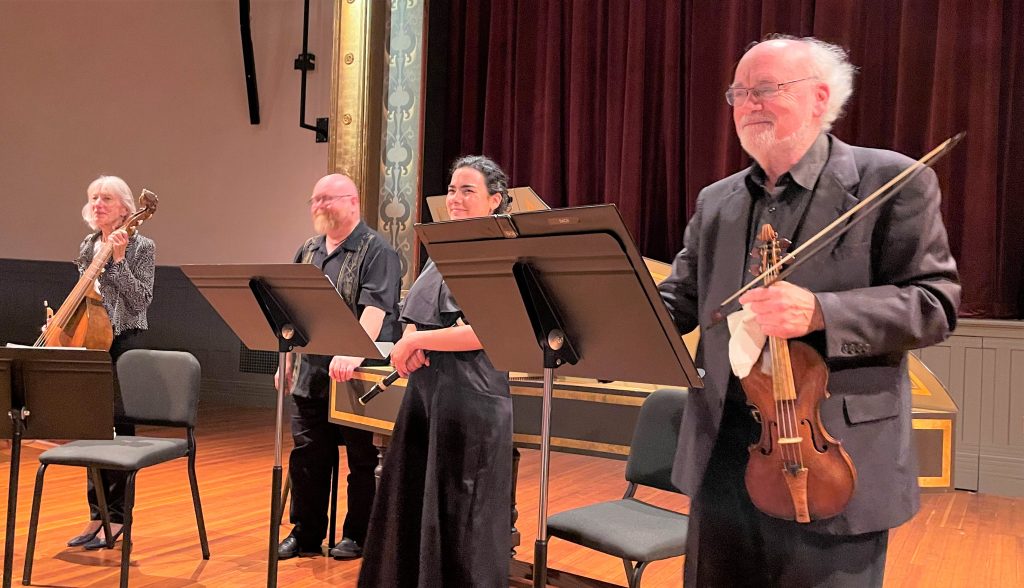
by Kevin T McEneaney
While, during his lifetime, J. S. Bach was not as famous as Vivaldi, Lully, or Handel, one may argue convincingly that Bach remains today the more august composer. (Well, there are the nearly hundred lost operas of Vivaldi who boasted that there was not a secretary in all of Italy who could take down musical dictation as fast as he could dictate it), yet Vivaldi often repeated and revised himself with his great melodic gift, which was not as complex as the work of Bach, supreme master of counterpoint. The program was titled Chamber Music of J. S. Bach.
Fingering a classic period harpsichord, Peter Sykes soloed a prelude introduction, Adagio in G major (BWV 968) to attune the capacity audience at Hudson Hall to a higher, lighter, far more spiritual and meditative atmosphere than its subsequent more aggressive and dramatic progeny, the piano. This piece is a keyboard version of the first movement of the Sonata no. 3 for solo violin (BWV 1005), although we can’t be sure that the arrangement was done by Bach. (I tend to think not, due to several dramatic pauses in the work, which is not characteristic of Bach, plus the Difficulty Scale rating for the work is a 3 out of 5, which is rather low for a Bach arrangement.)
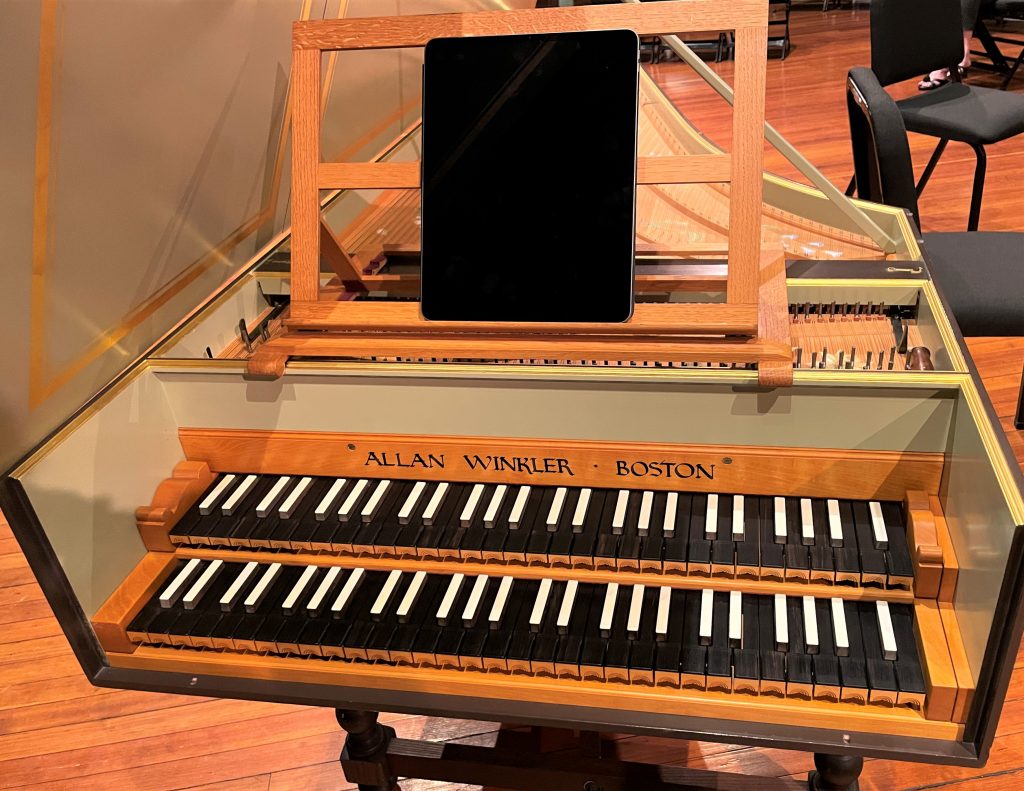
This was followed by a trio arrangement of Fugue in G major (BWV 1026), originally an Orchestral Suite from Bach’s first year in Leipzig (1729) when he ascended to Directorship, yet this work would have been performed with organ and more instruments. Here Laura Jeppesen on period viola da gamba offered superior neutral ground for the lead performers to compete. The swapping of counterpoint between harpsichord and Daniel Stepner’s violin proffered (subtly here) the argument that the baroque violin was superior to the keyboard, yet I wondered if Bach would agree with that proposition.
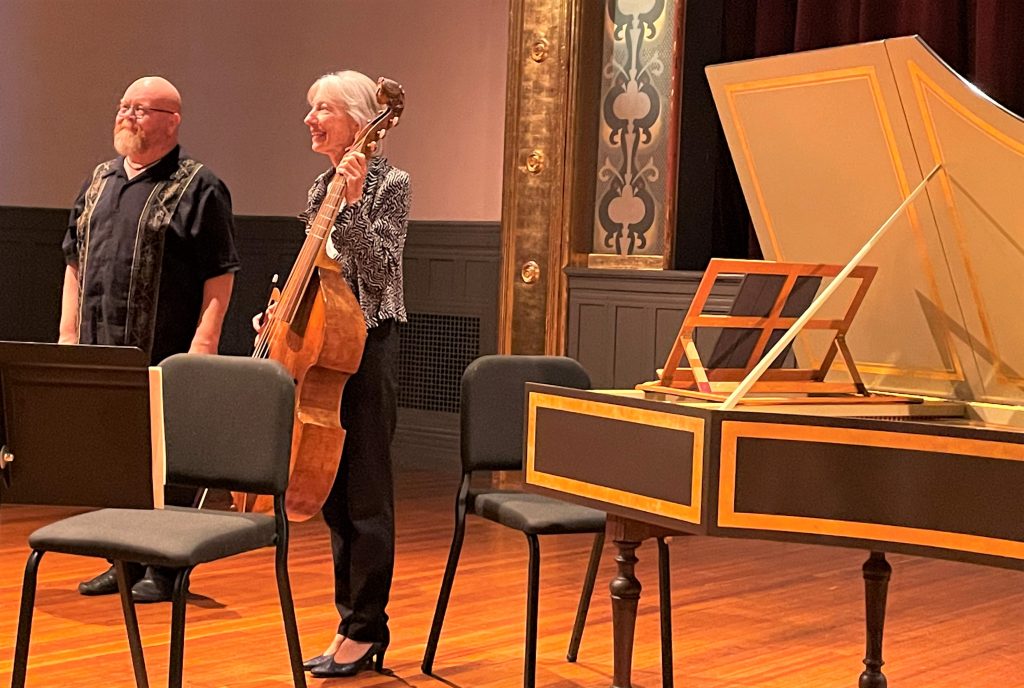
Sonata in E minor for flute and continuo (BWV 1034) brought out Andrea LeBlanc, who performed with adroit wind and attractively mellow texture, which was nearly hypnotic, on baroque flute for the lead role with harpsichord backing. The slow Adagio appeared to dramatize a gradual awakening to the splendors of a late Spring morning; the lively Allegro with to-and-fro counterpoint sounded like witty morning breakfast conversation; the peaceful, poetic Andante argued the quiet joys of rustic shelter where work can be done; I heard the rhythm of a gallop in the rapid Allegro and pictured either a sunset carriage ride or a gallop to a wood-side stream.
Sonata in D major for gamba and obbligato harpsichord (BWV 1028) served up such delicious counterpoint that I was enraptured. This was a contented rural scene that I was transplanted into foggy reverie. Intermission arrived with that brutal sting of shock!
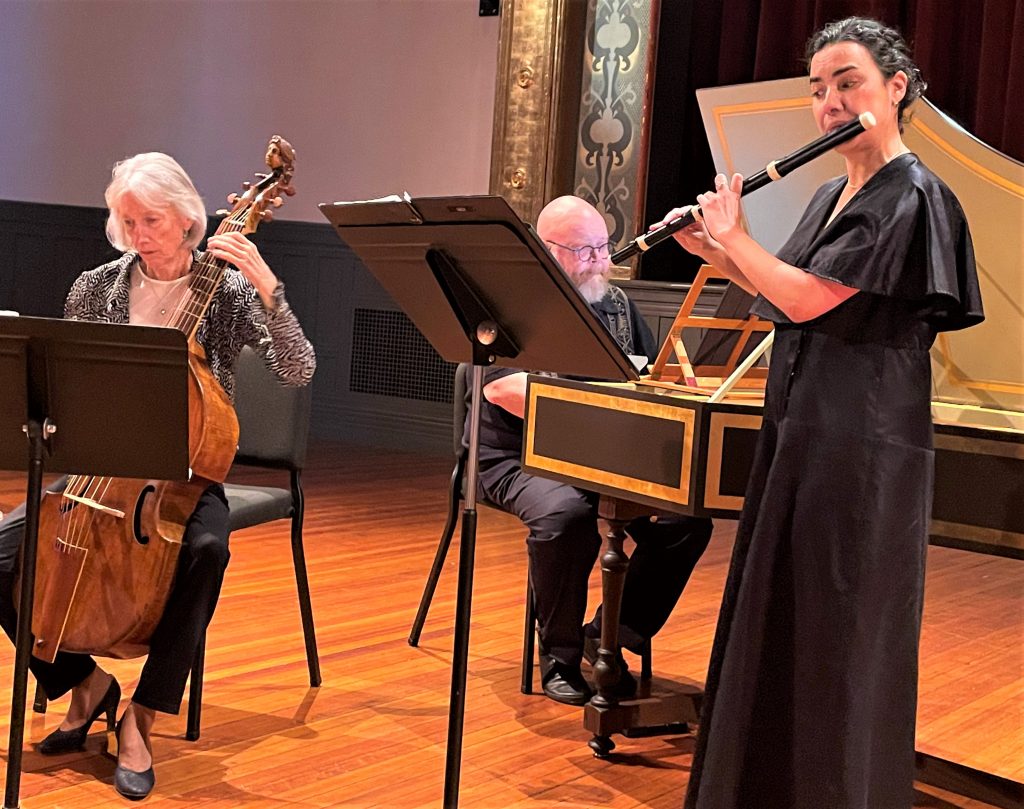
The second half featured many excerpts from The Musical Offering (BWV 1079) with the full cast of all four musicians. This was a work provoked by a technical dare of Frederick the Great (who played the flute) to compose a six-voice Ricercare, yet Bach’s real audience was to be for those hierophantic initiates who knew Bach’s work. Bach printed one hundred copies and gave them away to students and composers.
The brilliant synthesis of the artfully designed cannons resemble difficult crossword puzzles or casual, lightning solutions of a Rubix cube in a magical twinkle. They performed six of the ten puzzle cannons. Violin plays a cannon while the harpsichord plays it backwards and vice versa. Jeppesen on viola da gamba competed sideways with Sykes at harpsichord. There are also mutual, swapping upside-down arrangements.
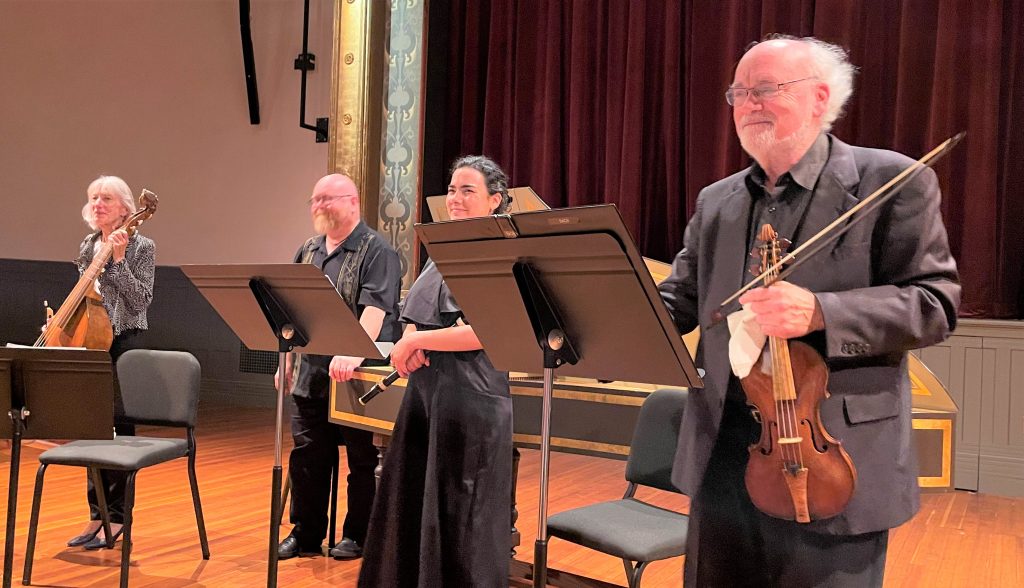
Perhaps the most difficult was the flute solo which Frederick was likely unable to manage, yet LeBlanc delivered this tour de force with smooth, ardent breathing technique as if racing a sailboat with aplomb. One could hear Bach laughing into eternity with these complex, difficult arrangements on something as simple as a cannon. (“Row, row your boat” is a cannon tune.)
All four musicians played the concluding trio sonata with delightful, passionate unity.
The audience rose to their feat and demanded a second bow and wanted a third bow, but the performers were too humble to bow again.